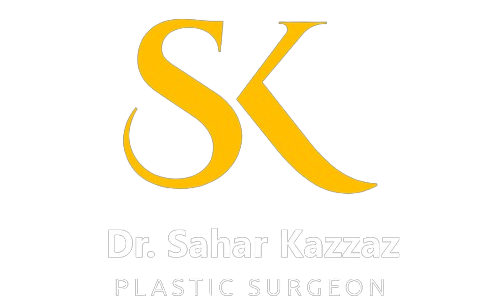The nipple and areola are essential components of the breast that not only contribute to the aesthetics of the breast but also play a functional role in breastfeeding. However, anomalies in their shape, size, or position can occur due to various reasons, ranging from birth defects to trauma or surgery. There are different anomalies affecting the nipple and areola and the available surgical approaches for correction account on the appearance and shape of the anomalies.
- Congenital Anomalies: Congenital anomalies of the nipple and areola refer to anatomical variations present at birth. These anomalies can include inverted nipples, supernumerary nipples (polythelia), underdeveloped or absent areolas (athelia), enlargement of areolas (macrothelia), or asymmetric nipples. Surgical correction options for congenital anomalies depend on the specific condition and may include procedures such as nipple inversion correction, nipple reconstruction, areola reduction/enlargement or surgical excision of accessory nipple.
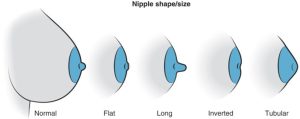
- Acquired Anomalies: Acquired nipple and areola anomalies can result from trauma, breast surgery like mastectomy or breast augmentation, or certain medical conditions like breast cancer.
Common acquired anomalies include pigment changes, scarring, nipple retraction, or asymmetry. Surgical approaches for acquired anomalies often involve techniques such as scar revision, tattooing, areola grafting, or reconstructive procedures like nipple-sparing mastectomy and breast reconstruction.
The choice of surgical approach depends on the patient’s condition, goals, and the underlying cause of the anomaly.
Enlarged Nipple
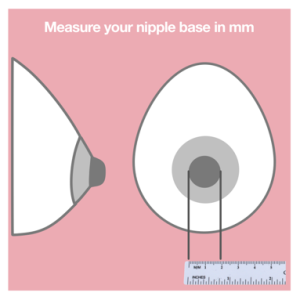
Nipples that appear overly large, (nipple hypertrophy) ) leads to self-consciousness or discomfort and may impacting the confidence. It may cause also a problem during breastfeeding, so correction is needed.
Nipple hypertrophy can be due to genetic factor if one or both parents have large nipple , it can caused by the improper formation of milk ducts or can be an after-effect of breastfeeding. hormonal fluctuations particularly puberty, pregnancy, and menopause, can impact the size and appearance of the nipple. Increase levels of oestrogen and progesterone can lead to the growth and enlargement of the nipple.
Nipple reduction surgery can address these concerns by creating a more proportionate and harmonious look between the nipple and the breast.
Elongated Nipple
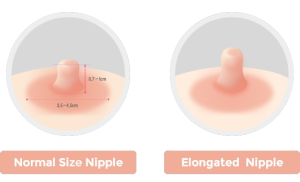
For some individuals, overly elongated nipples or significantly protrude, or look droopy can affect significantly overall aesthetic of the breasts leading to self consciousness . They are often due to birth defects, after giving-birth or after breast-feeding or natural aging process, as the skin loses elasticity, which can cause the breasts and nipple to sag and appear larger or more elongated. Also piercing and trauma leading to more prominent nipples
Nipple Reduction Surgery
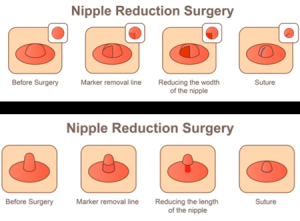
It is a cosmetic procedure aimed at resizing and reshaping the nipple to create a more proportionate and aesthetically pleasing appearance. This can be performed on its own or in conjunction with other breast procedures, such as breast augmentation, lift or reduction.
During the nipple reduction procedure, the surgeon will remove a portion of the nipple, reduce it to the desired size, and then insert stitches to secure it while it heals. If nipple reduction is done as a single surgery, local anesthesia can be used and requires very little downtime.
Inverted Nipples
About 10% of the female population have inverted nipples and it is a fairly common condition. Instead of the nipples pointing outward, they retract inward and appears flat. While inverted nipples are not uncommon, they can cause physical and emotional discomfort for those who have them, plus self-consciousness, a decreased nipple sensitivity, or difficulties with breastfeeding.
This condition can be categorized into three different grades:
- Grade 1 being the mildest form where the nipple can be temporarily pulled out manually or with the use of breast pump, but it may retract back to an inverted position after.
- Grade 2 the nipple can pulled out manually, but it will retract back to an inverted nipple potion position after.
- Grade 3 being the most severe form where the nipple is permanently inverted.
Causes:
They are estimated to occur in roughly 10-20% of people, making them far more common than people may think.
Generally, this physical characteristic falls into two main categories: congenital and acquired.
- Congenital: This is when nipples develop inverted from birth or during puberty. It can occur due to short milk ducts, underdeveloped nipple tissue, or tight connective tissue around the nipple.
- Acquired: In some instances, nipples can become inverted later in life due to factors such as breastfeeding, trauma, certain surgeries, or certain health conditions like infections or breast cancer.
Important to Know
The ability to breastfeed: While inverted nipples can pose some challenges during breastfeeding, many individuals with inverted nipples can still successfully nurse their babies. There are techniques and tools available, such as nipple shields or nipple stimulation exercises, which can help facilitate breastfeeding specially for mild cases.
Some of individuals with inverted nipples find that they become less inverted over time, particularly after pregnancy and breastfeeding.
Surgical Correction of Inverted Nipples
It is essential to remember that the decision to undergo surgery is a personal one. If an individual feels unhappy or uncomfortable with their inverted nipples, they may consider surgical correction as an option to address the issue and enhance their overall well-being.
The surgical correction of inverted nipples is a relatively straightforward procedure, typically performed under local anesthesia on an outpatient basis. The surgeon will carefully release and lengthen the tightened milk ducts and fibrous tissue, allowing the nipple to come forward. Depending on the severity of the inversion, the surgeon may use various techniques.. The procedure is generally well-tolerated, and patients can expect minimal discomfort during the recovery period.
Benefits and Impact: The positive impact of inverted nipple correction surgery is not only physical but also emotional. By restoring the nipple to its natural position, individuals can experience improved body image, enhanced self-confidence, and a greater sense of femininity or masculinity. It can also positively influence intimate relationships and overall quality of life.
Extra Nipples, Extra Breasts
Approximately 200,000 people in the United States are born each year with one or more supernumerary nipples. This means any number of nipples that are more than the usual two. These nipples can be located anywhere but normally will run along a V-like pattern on the torso called “the milk line” that runs from the armpits down to the genitals.
Interestingly, the condition is more prevalent in men than in women and some individuals also have excess breast tissue. Some of these nipples simply look like moles and others are more prominent, even having areolas and in some cases the nipples secrete milk.
Patients who find that these extra nipples cause them anxiety in social situations often seek to have supernumerary nipples removed. If the nipple is the only issue, the removal process is much like that of a mole and is traditionally a non-invasive outpatient surgery that takes very little time.
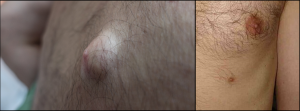
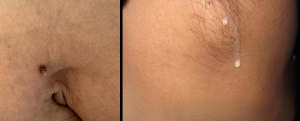
Puffy Areolas
Normally caused by genetics, puffy areolas can make breasts appear elongated or tubular. The bottom of the breast is narrow, and the crease of the breast is located high on the wall of the chest. Areola reduction surgery can be performed to correct puffy areolas as a single procedure or couples with additional breast augmentation surgery. Tuberous breast
Asymmetric Areola
An individual who has one areola that is significantly larger than the other may be self-conscious and desire to have this corrected. Areola surgery can correct this leaving you with breasts that look more symmetrical.
Correction of Acquired Areola Shape Defect
Acquired anomalies resulting from scarring of previous surgery or trauma can be corrected by scar Revision. Scarring caused by various factors can be improved with surgical techniques like scar excision, Z-plasty, or laser resurfacing. Additionally, fat grafting enriched with adipose-derived mesenchymal stem cells can help counteract the effects of fibrotic tissue. The choice of treatment will depend on the type and severity of the scar.
Important to Know
Nipple and areola anomalies can significantly impact an individual’s body image and self-confidence. Surgical correction offers an effective solution to address such concerns. Understanding the different congenital and acquired anomalies, as well as the surgical approaches used to correct them, allows individuals to make informed decisions in collaboration with their plastic surgeon. It is crucial for patients to discuss their goals and expectations with a qualified plastic surgeon or reconstructive specialist to determine the best surgical approach for their specific case.
